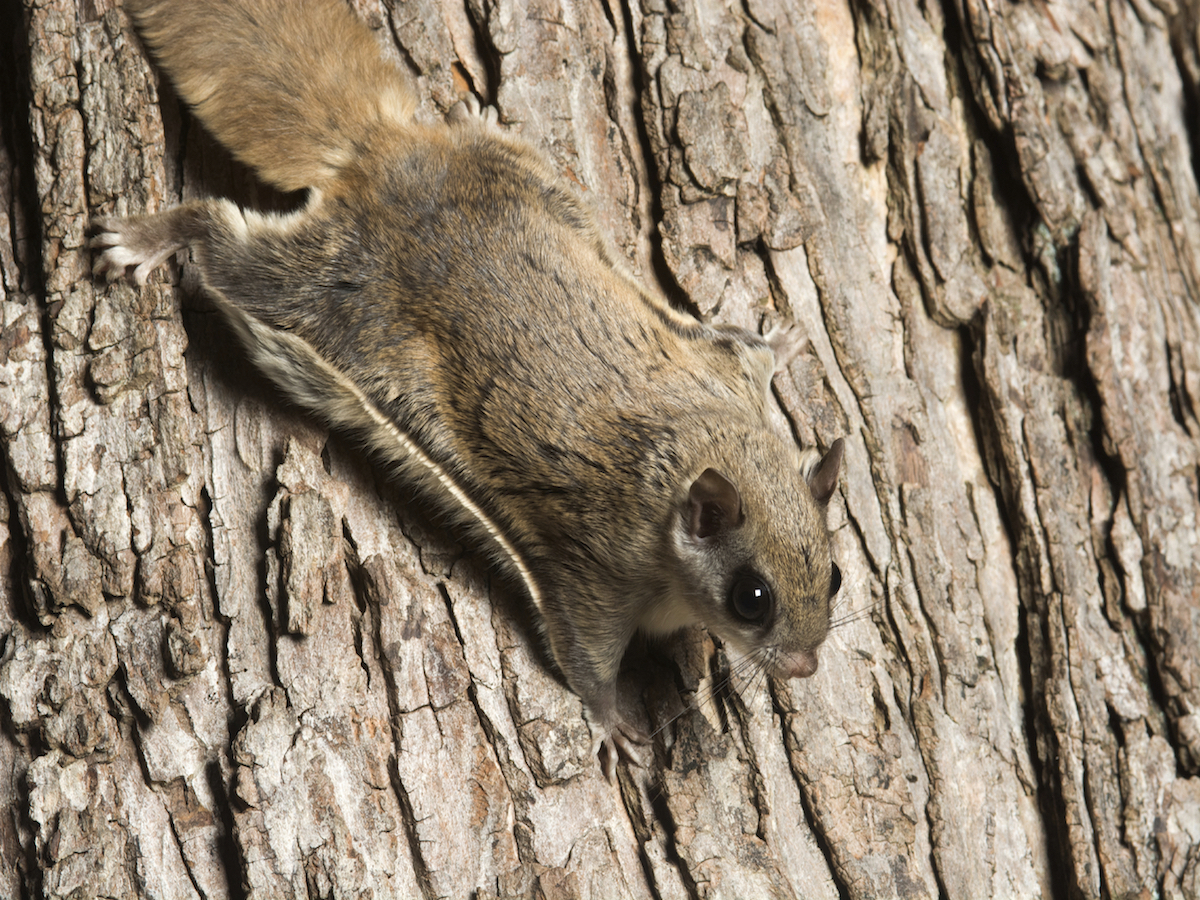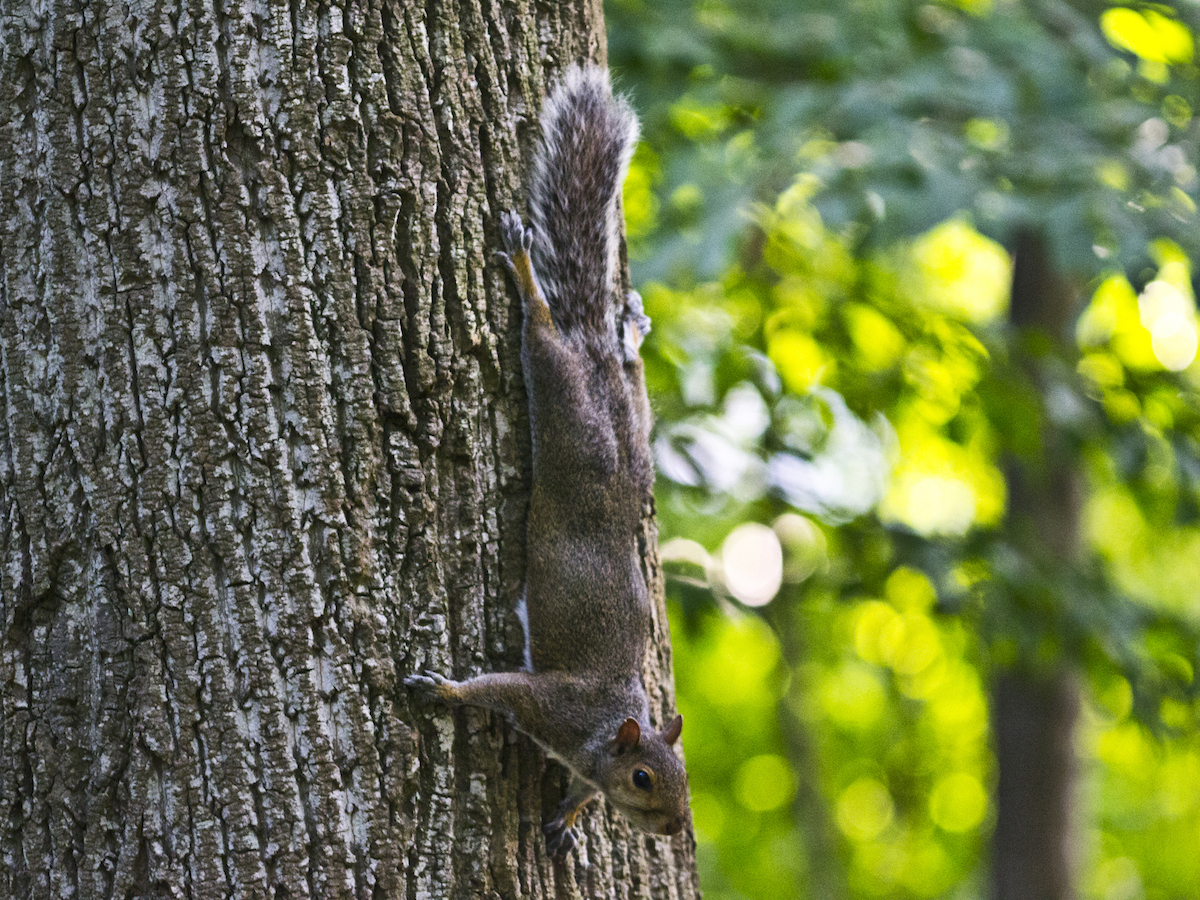Flying Squirrels Glaucomys sabrinus/volans spp.

Flying Squirrel Identification
Color: Depending on the species, flying squirrels range in color from white to gray to brown with a pale belly.
Size: Usually the head and body is about 5 ½” to 6 3/8” (14 cm – 16.2 cm) and tail is 3 ½” to 4 ½ ” (8.9 cm - 11.4 cm)
Legs: 4
Antennae: No
Shape: Flying squirrels have short, thick fur and a bushy tail.
Region: Flying squirrels are found throughout the eastern United States and Eastern Canada, west to Alaska, narrowly southward through Utah, and also southward through California.
What Are Flying Squirrels?
Flying squirrels are small tree squirrels. Despite their name, flying squirrels actually glide instead of fly. They stretch out their legs, spreading the fold of skin between the front and hind legs, to form a kind of parachute that lets them glide from branch to branch.
Flying squirrels become pests only when they take up residence in an attic where they can cause odor and damage with their urine, and keep people awake with their nocturnal activity. Medically speaking, however, flying squirrels are of little concern. While these squirrels have been implicated in the spread of human diseases, direct transmission is rare. See below for additional flying squirrel facts and information.
What Do Flying Squirrels Look Like?
Adult flying squirrels are relatively small, as their head, body and tail length totals around 10 inches. On average, they weigh anywhere from 2 to 6 ounces. Flying squirrels have large black eyes and 22 teeth. They have two loose folds of skin between front and hind legs that helps them glide distances of more than 80 yards.
Northern flying squirrels are covered in very soft, rich brown fur. Their underbellies are white at the tips only with the bases lead colored near the skin. Southern flying squirrels have thick, soft, glossy grayish to olive brown fur with white underbellies.
For the southern flying squirrel, there are usually two litters each year with the young born between April-May and August-September. The gestation period is about 40 days, and they have roughly 2-6 young per litter. Alternatively, the northern flying squirrel has only one litter each year, with roughly 2-5 young born in May-June. Occasionally, there is a second litter in the autumn.
Flying squirrels do not truly fly, but they glide through the air. The southern flying squirrel can glide over 80 yards. They stretch out their legs, spreading out the fold of skin between the front and hind legs to form a glider wing. While gliding, they are very agile and can turn and change their angle of decent. They land very lightly on all four feet. In contrast, however, flying squirrels are relatively clumsy on the ground.
The southern flying squirrel feeds on nuts, acorns, seeds, berries, some insects, and bird eggs, and will even eat meat if it’s available. Some food is stored in the nest chamber and also in tree crotches. The northern flying squirrel feeds primarily on nuts and seeds, but also eats some insects, and probably stores much food for winter use.
Northern flying squirrels are found in eastern Alaska, the western United States through California, Idaho, Montana, Utah and northern Wyoming, and in the eastern United States in Minnesota, Wisconsin, Michigan, New York and New England. They inhabit coniferous and mixed forests, where they prefer dead trees with numerous woodpecker’s holes for nesting, especially in stumps 6-20 feet high and those near the top.
Southern flying squirrels are found throughout the eastern United States, expect for northern New England and the southern tip of Florida, west to Minnesota, eastern Kansas and eastern Texas. They inhabit woodlots and forests of broadleaf and evergreen trees. Southern flying squirrels favor old woodpecker holes as nest sites, but they may build a summer nest of leaves, twigs and bark. They have also been known to use the attics of buildings to build their nests. In the winter, 20 or more southern flying squirrels may even den together.
There are many important steps to prevent a squirrel infestation inside the home. Homeowners should seal all possible points of entry around the house, paying close attention to small openings and cracks around doors and windows. They should also screen vents and openings to chimneys and keep tree limbs cut back 6-8 feet from the roofline.
Gnaw marks in wires, insulation and walls may indicate a flying squirrel infestation. The presence of droppings or sounds of scurrying in the walls are other signs of a problem.
If a flying squirrel infestation is suspected, it’s important to contact a licensed pest control professional to inspect the home, identify the species, implement exclusion techniques and trap out any resident squirrels. A thorough inspection beginning about an hour before sunset and into the evening is required to observe activity patterns. This is followed by a day inspection to locate potential entry points. Knowing the entry points makes it easier to find any nests.
A licensed pest control professional or wildlife specialist will often seal all holes larger than 6 mm with hardware cloth, metal flashing or other appropriate material. To more quickly reduce the population or to remove individuals from within the structure, traps may be used. The professional will be able to recommend the proper course of treatment based on the inspection. Contact one now for more flying squirrel facts and information. You can find one with the helpful zip code search below.



